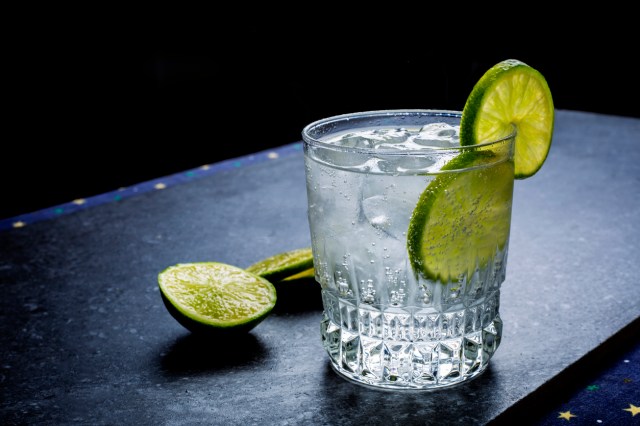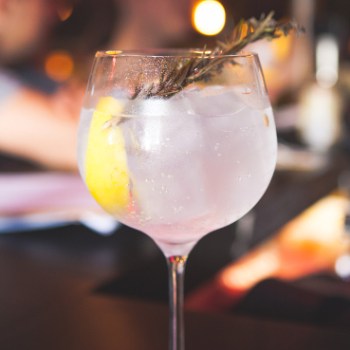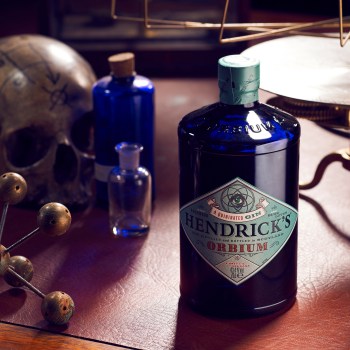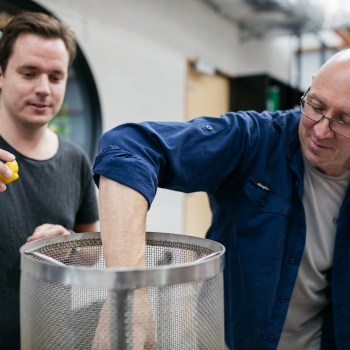In this feature from a past issue of BARS&clubs (republished in two parts for Gin Month), Caroline Childerley – AKA the Gin Queen – explains how to take your G&T game to the next level.
There is nothing else like lifting a G&T to your lips and having the bubbles from the tonic fizz and pop, emitting the fragrance of the gin to really get your mouth watering.
Why do we love that fizz so much? The fizz from carbonation triggers pain receptors (like eating spicy food but on a lower level), so when we sip a G&T (or any fizzy drink), endorphins are released – creating that “aaaah” moment. T
here are now over 6000 gins on sale globally – from icons like Bombay Sapphire’s Star of Bombay to experimental and boundary pushing gins from the smallest artisan distilleries – and consumers very often expect to choose their gin, tonic and sometimes garnish. Many bars have taken advantage of this trend by creating dedicated G&T menus, like Enrique’s in Perth, Gin Palace in Melbourne and my own favourite The Oliver Conquest in London.
COLONIAL ORIGINS
The G&T is steeped in history dating back to the 17th century, when Spanish colonists of Peru discovered that the bark from the Quinquina tree could be used to treat malaria. Fast forward to 1800s and the colonization of India by the British, where officers mixed their daily dose of quinine powder with gin to mask the bitter taste.
As the colonies expanded, the combination of gin and quinine’s reputation as a medicinal tonic grew. Quinine was originally taken in powdered form, then as a syrup before becoming a bottled carbonated beverage.
Unfortunately, by the 1980s mass production of tonic water had greatly diminished the quality and flavour of the product. Natural quinine was replaced by artificial substitutes and were made using high fructose corn syrup and other nasties such as saccharine and aspartame.
Increased concern over sugar consumption and a move towards choosing more natural ingredients created the perfect conditions for tonic water brand Fever-Tree to be born. Champions of natural flavours, it’s fair to say that without FeverTree there would not be the range of tonic waters that are on the market today – we certainly have them to thank for taking the classic G&T to new heights!
In addition to Fever-Tree there are some interesting Australian brands establishing a strong reputation for themselves. CAPI and Strangelove are two Melbourne companies worth checking out; especially interesting is the Strangelove Dirty Tonic, which uses raw, unrefined cinchona bark to create an earthy, rich bitterness.
CHECKLIST FOR THE PERFECT G&T
- Glassware
Years ago, I remember G&Ts being served in a small wine goblet. Spain has driven the trend towards large COPA glasses – Burgundy glasses make a good alternative if you can’t find a decent COPA. These are filled with lots of ice, plenty of tonic and often more than one garnish. It’s visually appealing and the wide glass allows the aromas of the gin to really open up, though they aren’t always the easiest to drink from, so best add a straw to avoid spillages!
Highballs are still popular and have the added advantage of being an easier receptacle to arrange your garnish (think of slices of cucumber artfully arranged down the inside of the glass in your Hendrick’s and tonic). Finally, the classic rocks glass is still great for the boozier ratios of G&T; Star of Bombay is best served this way.
- Ratios
As Dave Broom says in his book The Gin Manual, “mixers are there to lengthen and enhance, not obliterate”. This is worth remembering when working with some of the lighter, floral styles of gin where too much tonic is likely to drown the gin. Ratios in Spain tend towards four parts tonic to one-part gin, whereas in the UK it’s more like two to one (according to data collected by Gin Foundry UK).
It’s also worth checking out the individual qualities of the gin and the tonic you are using before deciding the ratios. The lighter the gin (in flavor and ABV), the less tonic required. With overproof and more botanical-heavy gins you can be a bit more liberal with the tonic. It’s also worth noting that not all tonics go with all gins, so play around until you find a good match.
Keep an eye on the BARS&clubs homepage and sign up for the e-newsletter(if you haven’t already) for part two, delving into the world of garnishes…



